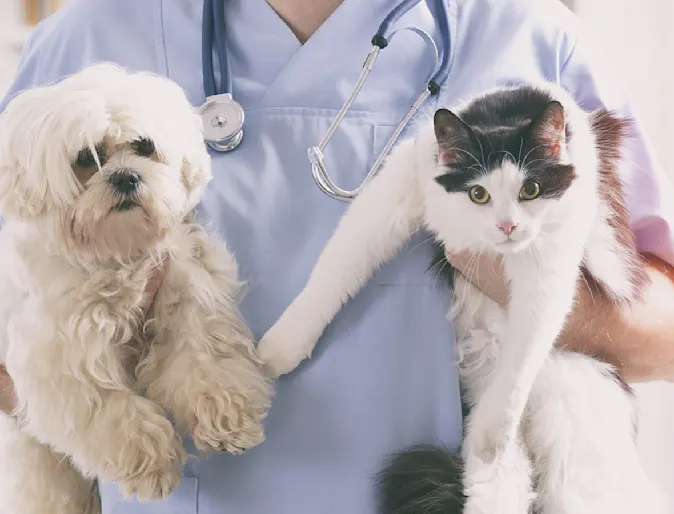Essential Tips for Choosing a Trustworthy 24 hour vet near me
Wiki Article
Why Pet Rehabilitation Is Vital: the Advantages of Vet Services for Your Pet's Recovery
Pet rehabilitation is a necessary part of recovery for animals dealing with injuries or impairments. Veterinary services offer essential assistance with customized recovery strategies that resolve private needs. These plans frequently consist of discomfort administration, physical therapy, and nutritional support. Comprehending the numerous elements of animal rehab can illuminate its importance in boosting recuperation results. What details benefits do these services supply, and exactly how can they transform a pet's healing journey?Comprehending Pet Recovery
Pet rehab encompasses a series of healing techniques targeted at bring back the wellness and capability of injured or disabled animals. This area incorporates numerous strategies, consisting of physical treatment, hydrotherapy, and job-related treatment, customized to satisfy the certain needs of each animal. Recovery professionals examine a pet's problem, creating individualized therapy plans that may involve exercises to enhance muscles, improve flexibility, and enhance overall health. The process not only focuses on physical recuperation but likewise addresses psychological and behavioral facets. Animals frequently experience stress and anxiety and anxiety following an injury, making mental health considerations essential in recovery. By developing a helpful setting, therapists can help pets regain their confidence and adapt to their new situations. Via regular sessions, pets can experience substantial improvements, eventually leading to a far better lifestyle. Overall, comprehending animal rehab highlights its importance in advertising recovery and improving the bond in between family pets and their owners.
The Role of Pain Monitoring in Healing
Exactly how important is effective discomfort monitoring in the recuperation of damaged pets? It plays a vital duty in promoting healing and boosting the overall well-being of animals. Proper pain monitoring not just alleviates discomfort but additionally promotes movement, enabling animals to join recovery tasks necessary for healing. When discomfort is successfully taken care of, animals often tend to react favorably to therapy, leading to quicker rehabilitation outcomes.Veterinarians make use of numerous methods to evaluate and attend to discomfort, including medications, acupuncture, and alternative treatments. By customizing pain monitoring techniques to the individual needs of each animal, veterinarians can ensure that pets stay tranquil and cooperative throughout their healing trip. Moreover, lessening pain helps in reducing tension, which can inhibit healing and prolong recovery times. To sum up, efficient discomfort administration is necessary for improving the healing process and enhancing the high quality of life for injured animals.Physical Treatment Techniques for Pets
Various physical therapy methods are offered to assist in the recovery of pet dogs recouping from injuries or surgical procedures (tplo surgery for dogs). These techniques can boost movement, relieve discomfort, and promote healing. Restorative exercises, for instance, aid reinforce muscles and enhance joint function, allowing pets to reclaim their physical capabilities progressively. Hand-operated treatment, that includes massage and mobilization, can minimize stress and boost flow, adding to a quicker recovery.Other methods such as easy variety of movement exercises encourage joint flexibility and reduce stiffness. Furthermore, electrical stimulation therapy might be employed to boost nerves and muscles, advertising recovery and pain relief.Veterinary specialists often tailor these strategies per pet's specific demands, making certain an extensive recovery plan. By executing these physical therapy approaches, pet dogs can experience better quality of life and an extra successful recovery from their conditions. The assimilation of these techniques into rehab programs is vital for optimal recovery outcomesBenefits of Hydrotherapy for Rehabilitation
Hydrotherapy provides considerable advantages in animal recovery, especially in improving wheelchair. This water-based therapy advertises discomfort relief while supplying convenience to harmed or recovering pets. Furthermore, it promotes strength-building workouts that contribute to overall physical recovery.Boosted Flexibility Enhancement
As animals recuperate from injuries or surgical procedures, boosted flexibility commonly comes to be a primary goal of their rehab. Hydrotherapy works as an important tool in accomplishing this purpose. Through water-based workouts, pets can take part in low-impact activities that help with joint wheelchair and enhance muscle mass without the stress and anxiety of weight-bearing tasks. The buoyancy of water sustains their bodies, enabling for enhanced array of activity and flexibility enhancement. In addition, hydrotherapy encourages better balance and coordination, which are important for bring back typical activity patterns. Normal sessions can cause substantial development in an animal's physical capacities, inevitably enhancing their top quality of life. This approach not just aids in recuperation but likewise advertises a much more energetic and satisfying way of living post-rehabilitation.Discomfort Relief and Comfort

Relief from pain is an important facet of animal rehab, and hydrotherapy greatly adds to this procedure. By making use of water's buoyancy, hydrotherapy lowers joint stress and alleviates pain during activity. This therapeutic approach gives a soothing environment where family pets can involve in gentle workouts without the complete weight of their bodies influencing their healing. The warm water promotes blood circulation, advertising healing while additionally encouraging relaxation. In addition, hydrotherapy sessions can be customized to fulfill the details demands of the animal, making certain excellent convenience. As pet dogs experience decreased discomfort and enhanced convenience levels, their overall willingness to join recovery activities frequently improves, causing an extra efficient healing journey. Hydrotherapy offers as a critical device in boosting discomfort relief and convenience throughout rehabilitation.
Strength Building Workouts
Strength-building workouts play a necessary function in the recovery process, with hydrotherapy offering unique benefits. This form of therapy utilizes water resistance to boost muscle mass strength without putting extreme strain on the joints. The buoyancy of water sustains the animal's weight, permitting more secure activity and boosted series of activity. In addition, hydrotherapy can improve cardio wellness and advertise general health and fitness, aiding in faster recuperation from injuries or surgeries. The regulated setting additionally minimizes the risk of reinjury, making it an ideal choice for family pets calling for rehabilitation. Normal hydrotherapy sessions can cause recognizable renovations in movement, stamina, and endurance, eventually boosting the pet dog's lifestyle and capacity to go back to regular activities.Value of Customized Rehab Strategies
Personalized rehabilitation strategies are essential for resolving the unique requirements of each pet, guaranteeing individualized therapy approaches. These plans permit reliable development tracking and essential modifications, promoting perfect healing results. Furthermore, an alternative method can improve the overall health of the animal, promoting a much more extensive recovery experience.Individualized Therapy Approaches
While several rehabilitation programs adopt a one-size-fits-all technique, the unique needs of each pet require personalized treatment prepare for ideal recovery. Custom-made rehab plans think about different elements, consisting of the pet's varieties, age, clinical background, and specific injuries or conditions. By customizing treatments, veterinarians can attend to each pet dog's special difficulties, taking full advantage of the efficiency of the rehabilitation procedure. Individualized strategies might incorporate different methods such as physical therapy, hydrotherapy, and therapeutic exercises, ensuring that the treatment lines up with the animal's abilities and development. In addition, customized methods cultivate a stronger bond in between the family pet and the caretaker, promoting a more engaging and supportive recovery atmosphere. Eventually, customized therapy is vital for achieving ideal possible end results in pet rehabilitation.Progress Tracking and Adjustments

Holistic Recuperation Strategies
Alternative recovery approaches are necessary for reliable pet recovery, as they stress the significance of individualized treatment strategies customized to each pet's details demands. This method thinks about the physical, psychological, and environmental elements affecting healing. Custom-made rehab plans might consist of a mix of physical therapy, dietary counseling, and behavior alterations. By attending to these varied elements, vets can boost the general health of the pet and promote a faster recuperation. In addition, such tailored strategies assist in a much deeper understanding of the pet's special challenges, leading to extra effective treatments. Eventually, alternative recuperation methods not just boost physical health however additionally add to the animal's mental and psychological security, making sure a thorough recovery experience.The Influence of Nutrition on Recovery
Nourishment plays a crucial function in the recuperation process for restoring animals, usually determining the rate and performance of healing. A well-balanced diet plan offers the essential nutrients that support cells repair, improve the immune system, and improve total vitality. Protein is particularly essential, as it helps in muscle restoring and recovery from injuries. Necessary fatty acids, vitamins, and minerals likewise contribute to lowering swelling and advertising optimum mobile function.Veterinarians regularly emphasize the significance of customized nutrition strategies, taking into consideration each pet's particular demands, age, and wellness status. Correct hydration is similarly essential, as fluids facilitate vitamins and mineral absorption and aid in cleansing. By guaranteeing that family pets obtain ideal nutrition, caregivers can greatly enhance their possibilities of a successful recovery, causing better long-lasting health results. Inevitably, nourishment functions as a fundamental aspect in the rehabilitation journey, sustaining animals in restoring strength and strength post-injury or ailment.Success Stories: Pets Who Grew After Recovery
Successful rehab tales abound, showcasing the durability of animals that have gotten rid of significant difficulties. Take, as an example, Bella, a golden retriever who experienced extreme injuries from a vehicle accident. With devoted veterinary treatment and a comprehensive rehabilitation program, she regained her flexibility and returned to her lively self, much to her owner's joy. Max, an elderly feline detected with arthritis, experienced exceptional improvement with a combination of physical treatment and discomfort management. His newly found dexterity allowed him to appreciate his favored sunbathing places once more. An additional inspiring situation is that of Coco, a rescued greyhound who conquered stress and anxiety with therapy and socializing strategies, enabling her to grow in her new home. These success stories exhibit the transformative power of pet rehabilitation, emphasizing that with the appropriate support, pets can not only recover however lead he has a good point fulfilling lives, improving the bonds they show their households.Frequently Asked Concerns
The length of time Does the Rehabilitation Process Generally Consider Pets?
The recovery procedure for pets usually varies based upon the injury or condition, varying from a couple of weeks to a number of months. Individual progress, treatment type, and commitment published here to workouts significantly affect the total period of recovery.Exist Any Type Of Dangers Connected With Animal Rehabilitation?
Pet rehab might bring dangers such as worsening of injuries, inappropriate techniques causing pain, or inadequate monitoring throughout healing. These variables can hinder development and affect the overall performance of the rehab procedure.
Can All Pets Take Advantage Of Rehabilitation Solutions?
Not all pets may call for rehab, but many can benefit significantly. Rehabilitation services can improve movement, ease pain, and improve total health, particularly for those recovering from injuries, surgical procedures, or persistent problems.How Can I Prepare My Animal for Rehabilitation Procedure?

What Indicators Indicate My Pet Needs Rehab?
Signs suggesting a pet dog may need recovery consist of problem walking, hopping, lowered task degrees, unwillingness to jump, or indications of pain. Observing these behaviors can motivate proprietors to seek professional evaluation and therapy for their pets.Report this wiki page